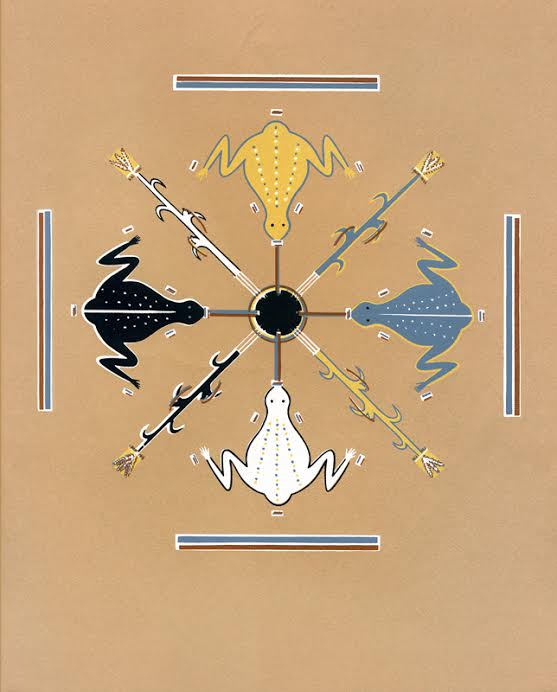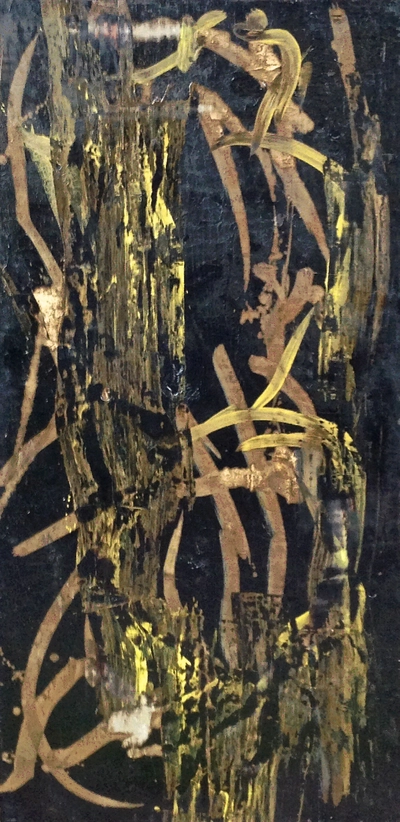ARAS Connections: Image and Archetype - 2013 Issue 3

ARAS has always approached image holistically - image/symbol/culture/archetype as one. This 360° circumambulation of an image is what makes ARAS unique among the now plentiful image sites on the web. This is at the very heart of how we have become who we are. Now, in addition to preserving and functioning as an archive of the past, ARAS is thinking ahead and planning what we believe to be most important in the next stages of our development.
Jungians are not necessarily known for Strategic Five Year Plans. Our development as a psychological approach and as a tradition has been more about an unfolding that follows the deeper undercurrents of unconscious processes. But, as with every vital organization looking to its future in the 21st Century, ARAS has embraced the task of actively focusing on what will best help to further grow the archive itself, what will most enhance our online presence, and what will extend our unique perspective into better dialogue with the broader world. We will continue to treasure the holistic approach to symbolic material at the heart of who we are as we begin to articulate our directions for the future. As the parameters of our Five Year Strategic Plan take shape, we will be keeping you abreast of our plans for the future.
Tom Singer, M.D.
Co-Editor of ARAS Connections
Cannonballing into Tar

Matthias Leutrum first presented the material that you are about to read and see at the Art and Psyche in the City conference in July 2012. It was so well received that we asked Matthias to reprise his talk for a joint Friends of ARAS/Art and Psyche event in September 2013; the event coincides with the publishing of this presentation in ARAS Connections. Again the audience was enthusiastic in response. The combination of thoughtfully crafted word and image telling a compelling story of transormation created an atmosphere of interest and excitement.
It would seem that Matthias very well conveys a deeply alchemical and transformative process that is moving and inspiring. We are reminded of James Hillman's famous dictum: "Stick to the image!" In true Jungian fashion, he circumambulates the theme of the human cannon ball starting with a spark of consciousness that ignites a highly creative curiosity; he forges ahead with exploration of movement, color, texture, materials and research without knowing the outcome. This willingness to enter into a relationship with the unconscious has been profoundly fruitful with the images that have been made manifest from his psychic process. Learning of his interaction with tar, paint, scraping, drawing and dripping is fascinating and offers a wonderful glimpse into the process of emergence that connects animate and inanimate in what Jung calls the psychoid. His images are enlivening and call the viewer into relationship with them--with Matthias as the artist--yes--but with the images as entities unto themselves. This must be the connection of art and nature. We humans live within a material world that surrounds us and if we look, we realize that this world is alive; it is the unus mundus.
We are delighted that the work of Matthias Leutrum is the first in a series of presentations from the Art and Psyche in the City conference to be published in ARAS Connections.
Linda Carter and Melinda Haas
For the Art and Psyche Working Group
Biography
Matthias Leutrum was born in 1966 in Germany, completed his studies at the Ecole des Beaux Arts in Paris and moved to New York. He has a studio in Manhatten and in Leveret, MA. Matthias is the Artist in Residence at the Children’s Storefront, an independent and tuition-free school in Harlem, and at the Harlem School of the Arts.
I have divided this presentation into three parts. To begin, I will introduce the human cannonball theme and some of my paintings that are based upon it. In the second part I will give a condensed history of the human cannonball act and talk about how that history connects to my current understanding of the subject. And to conclude, we’ll take a look at how the cannonball theme has evolved in my most recent work.
Four years ago I came across this image in the arts section of the New York Times and was immediately stopped in my tracks. I had never been a big circus kid growing up and this photo was my very first introduction to the whole phenomenon of human cannonballs. What struck me immediately was the spectacle of these two figures being propelled into space at the same time as they were suspended in the frozen frame of the photograph. This contradictory tension carried a wealth of visual possibilities. And with every-one of those possibilities came questions.
New York Times Article
I began addressing some of these questions by working on a painting drawn directly from the source image.
I remember the process as being slow going and tentative as I tried to sort out the visual problems presented by the image, the 2 dimensionality of my canvas versus the 3 dimensionality of the actual event. Meanwhile I was also trying to mentally get inside and under the skin of the performers. I tried to develop a physical understanding in my own body of what was happening to them during their act. How did they experience and process the forces of propulsion, flight and free fall?
Read Cannonballing into Tar in its entirety.
Art and Psyche in the City

In July 2012, the second very successful international Art and Psyche conference was held in New York City. It was organized by the Art and Psyche Working Group and ARAS was one of its sponsors. We are happy to announce that we will continue to publish the papers from this conference in ARAS Connections. We hope you have enjoyed reading the articles from the first conference, held in San Francisco in 2008, which focused exclusively on the visual image as guide and inspiration for bridging the arts and depth psychology together. This time, as we in the Working Group reflected on the tremendous range of creativity in New York City, we decided to include all the creative arts and named the conference Art and Psyche in the City. The city itself became involved as participants were guided through its wonderful sites and museums, which of course included ARAS for a welcoming cocktail party. Another collaborative event took place at ARAS a couple of weeks ago when the artist Matthias Leutrum gave his presentation from the conference at a joint Friends of ARAS and Art and Psyche event. And the work on the next conference has already begun...
We hope that you will enjoy reading the papers as we publish them in the coming issues of ARAS Connections.
Ami Ronnberg
Co-Editor of ARAS Connections
Become a Member of ARAS!
Become a member of ARAS Online and you'll receive free, unlimited use of the entire archive of 17,000 images and 20,000 pages of commentary any time you wish—at home, in your office, or wherever you take your computer.
The entire contents of three magnificent ARAS books: An Encyclopedia of Archetypal Symbolism, The Body and The Book of Symbols are included in the archive. These books cost $330 when purchased on their own.
You can join ARAS Online instantly and search the archive immediately. If you have questions, please call (212) 697-3480 or email info@aras.org
We Value Your Ideas
As our newsletter grows to cover both the ARAS archive and the broad world of art and psyche, we're eager to have your suggestions and thoughts on how to improve it. Please send your comments to info@aras.org. We look forward to your input and will reply to every message.
Subscribe
If you're not already a subscriber and would like to receive subsequent issues of this newsletter by email at no cost, e-mail us at newsletter@aras.org.
